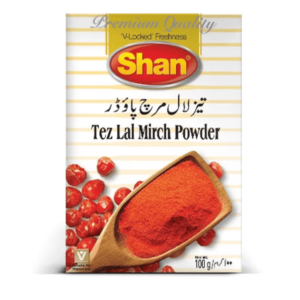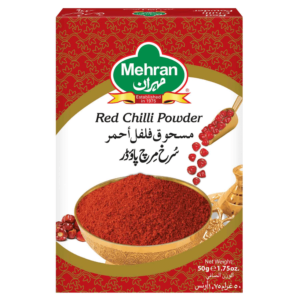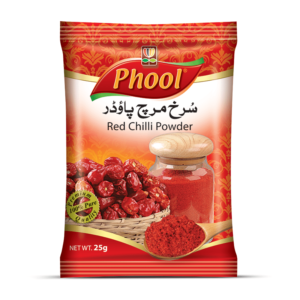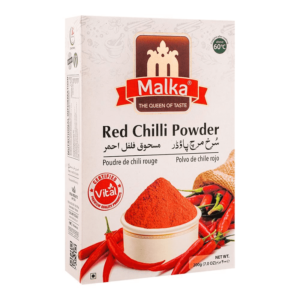The Super Red Chili That Heats Up The World
Introduction to Red Chili: The Fiery Delight
Discover the world of red chili, a spicy fruit also known as chili pepper or hot pepper, originating from the Capsicum genus. Known for its vibrant red color, intense spiciness, and distinct flavor, takes the spotlight in numerous dishes worldwide. Embraced by various cultures, it holds a special place in traditional cuisine, medicine, and cultural celebrations. This guide aims to provide comprehensive information about , its characteristics, its cultural importance, and its role as a staple in diverse cuisines worldwide.

A. Definition of Red Chili
Explanation of what Red Chili is:
Red chilli, also known as chili pepper or hot pepper, is a spicy fruit belonging to the Capsicum genus. It is widely used in culinary dishes and is known for its fiery heat and distinctive flavor.
B. Importance and Cultural Significance
Discussing the importance of Red Mirch in various cuisines:
Chilli Pepper is an integral ingredient in many cuisines worldwide, including Indian, Mexican, Thai, and Chinese. It adds a unique spiciness and enhances the taste of dishes.
Cultural significance and traditional uses:
Red chili holds significant cultural value in various societies. It has been used for centuries as a medicinal herb, a symbol of courage, and a key element in cultural celebrations and rituals.
Process of the Production of Red Chili
The production of red chilli involves several stages, from cultivation to harvesting and processing. Here is a step-by-step process of how red chilli is produced.

Seed Selection and Cultivation:
Farmers select high-quality chili seeds based on desired characteristics such as flavor, heat level, and disease resistance.
The cultivation process begins by sowing the seeds in nurseries or seedbeds, where they are protected and nurtured until they grow into seedlings.
Transplanting:
Once the seedlings are around 6-8 weeks old and have developed strong roots, they are transplanted to the main field.
The field is typically prepared with well-drained soil, rich in organic matter, and exposed to ample sunlight.
Growth and Maintenance:
During the growth phase, the chili plants require regular watering, and farmers may use fertilizers to provide essential nutrients.
Weeding and pest control measures are implemented to protect the chili plants from competing plants and potential threats.
Flowering and Fruit Formation:
As the chili plants mature, they develop flowers. Insect pollination leads to the formation of chili fruits.
The fruit starts off green and gradually matures to its characteristic red color as it ripens.
Harvesting:
The harvesting time varies depending on the chili variety and desired level of spiciness. Generally, it takes 70-90 days from transplanting to harvest.
Workers manually pick the mature chili peppers from the plants, being careful not to damage the delicate fruits.
Drying:
After harvesting, the peppers are spread out in the sun to dry. Drying helps reduce moisture content, preventing spoilage and extending shelf life.
In some regions, farmers may use mechanical dryers to speed up the drying process.
Sorting and Grading:
Once dried, the chilies are sorted and graded based on size, color, and quality. Uniformity in appearance is essential for commercial sale and export.
Packaging and Storage:
The sorted and graded chilies are packed in bags, containers, or other suitable packaging materials for distribution and storage.
Proper storage conditions are essential to maintain the quality and shelf life of the hot peppers.
Distribution and Marketing:
Chilli peppers are distributed to local markets, grocery stores, and supermarkets for consumer purchase.
In some cases, they may also be processed into chili powder, chili flakes, or other spice products for wider commercial use.
Types of the Red Chilli:
There are numerous types of red chilli, each varying in size, shape, heat level, and flavor. Here are some popular types of red chilli:

Cayenne Pepper (Capsicum annuum):
- Long and slender, with a bright red color.
- Moderately spicy, ranging from 30,000 to 50,000 Scoville Heat Units (SHU).
- Commonly used as a ground spice or in dried form to add heat to various dishes.
Thai Bird’s Eye Chilli (Capsicum frutescens):
- Small and thin, about 1-2 inches long.
- Very hot, ranging from 50,000 to 100,000 SHU.
- Widely used in Thai and Southeast Asian cuisines, particularly in spicy sauces and curries.
Jalapeño Pepper (Capsicum annuum):
- Medium-sized, green when unripe, and mature to red.
- Moderately spicy, typically around 2,500 to 8,000 SHU.
- Often used in Mexican dishes, salsas, and pickled for toppings.
Serrano Pepper (Capsicum annuum):
- Small and slender, about 1-2 inches long.
- Hotter than jalapeño, ranging from 10,000 to 23,000 SHU.
- Commonly used in Mexican cuisine, salsas, and pico de gallo.
Chile de Arbol (Capsicum annuum):
- Thin and elongated, about 2-3 inches long.
- Very hot, with a heat level of around 15,000 to 30,000 SHU.
- Often used in dried form to make hot sauces and infuse oils.
Thai Dragon Pepper (Capsicum annuum):
- Small and tapered, about 1-2 inches long.
- Extremely hot, ranging from 50,000 to 100,000 SHU.
- Popular in Thai, Vietnamese, and other Southeast Asian cuisines.
Carolina Reaper (Capsicum chinense):
- Distinctive wrinkled and bumpy appearance.
- One of the hottest chili peppers in the world, measuring over 1.6 million SHU.
- Used sparingly in hot sauces and chili extracts for extreme heat.
Kashmiri Chili (Capsicum annuum):
- Dark red in color, with a slightly wrinkled appearance.
- Mild to moderately spicy, around 1,000 to 2,000 SHU.
- Frequently used in Indian and South Asian dishes for color and mild heat.
Uses of Red Chilli

Red mirch is a versatile and widely used spice in various cuisines around the world. Its distinct flavor and spiciness add a unique kick to dishes. Here are some common uses:
Culinary Uses:
Seasoning:
Hot pepper is used as a primary seasoning in a wide range of savory dishes, such as curries, stews, soups, and sauces.
Spice Blends:
Ground chili is a key ingredient in many spice blends like curry powder, chili powder, and garam masala.
Marinades:
Hot chili is often used to create flavorful marinades for meats, seafood, and vegetables.
Pickling:
Some chili varieties are used for pickling, adding a tangy and spicy element to preserved foods

Condiments and Sauces:
Want to learn how to make sauce? click here
Hot Sauce:
Red chili peppers are the basis for various hot sauces and chili pastes found in different cuisines worldwide.
Sambal:
Popular in Southeast Asia, sambal is a spicy chili-based condiment that enhances the flavor of many dishes.
Sriracha:
A well-known hot sauce made from red chili peppers, vinegar, garlic, and sugar, originating from Thailand.

Snacks and Side Dishes:
- Chilli Flakes:
Red chilli flakes are often sprinkled over pizzas, pasta dishes, and salads to add heat and flavor.
- Fried Chili:
Whole or sliced red chilies are fried until crispy and used as a topping or garnish for various dishes.
- Chili Jam:
A sweet and spicy jam made from red chili peppers, often served with cheese or as a condiment.
Preserving and Drying:
- Dried Red Chili:
Chilies can be dried and stored for later use in cooking and making spice blends.
- Chili Oil:
Red chilies can be infused in oil to create chili oil, which is used for cooking and as a condiment.
Medicinal Uses:
- Traditional Medicine:
Red chili has been used in traditional medicine for its potential health benefits, such as pain relief and improving digestion.
- Capsaicin Cream:
Capsaicin, the compound responsible for the spiciness in chilies, is used in topical creams for pain relief.
Decorative and Festive Uses:
- Chilli Pepper are sometimes used decoratively to add a pop of color and festive flair to dishes or holiday decorations.
- In some cultures, red chilies are used in rituals and celebrations as a symbol of good luck, prosperity, or protection.
Hot Pepper Nutrition Facts:
Nutrient | Amount per 20g |
|---|---|
| Calories | 7 |
| Total Fat | 0.3g |
| Saturated Fat | 0.1g |
| Cholesterol | 0mg |
| Sodium | 1mg |
| Total Carbohydrate | 1.3g |
| Dietary Fiber | 0.6g |
| Sugars | 0.6g |
| Protein | 0.4g |
| Vitamin A | 1391mg |
| Vitamin C | 14.4mg |
| Folate | 9.6mg |
| Vitamin B6 | 0.1mg |
| Vitamin K | 8.9mg |
| Calcium | 6mg |
| Iron | 0.2mg |
| Magnesium | 5mg |
| Potassium | 84mg |
| Phosphorus | 7mg |
| Zinc | 0.1mg |
Please note ⚠
The nutritional content can vary slightly depending on the specific types of red chilli used. The values provided here are approximate and based on average data.
Pros & Cons of the Red Chili:
Red Chilli Benefits behalf of Medical Industry:

1.Pain Relief:
Capsaicin has analgesic properties and is often used in topical creams to alleviate pain associated with arthritis, muscle aches, and nerve-related conditions like neuropathy.
2.Cardiovascular Health:
Red mirch consumption may promote heart health by improving blood circulation, reducing cholesterol levels, and supporting blood vessel health.
3.Weight Management:
Capsaicin is believed to boost metabolism and increase fat burning, potentially aiding in weight management efforts.
4.Antioxidant Action:
Red peppers contain antioxidants that help combat oxidative stress, reducing the risk of chronic diseases and supporting overall health.
5.Anti-Inflammatory Effects:
Capsaicin may reduce inflammation, offering potential relief for conditions like rheumatoid arthritis and other inflammatory disorders.
6.Blood Sugar Regulation:
Some research suggests that red chili consumption may help regulate blood sugar levels, which is beneficial for individuals with diabetes or at risk of diabetes.
7.Gastrointestinal Health:
Red pepper can stimulate the production of gastric juices, aiding digestion and potentially alleviating indigestion and gas.
8.Respiratory Health:
The heat from hot chilies can help clear nasal passages and alleviate congestion, providing relief from cold and flu symptoms.
9.Cancer Prevention:
Studies suggest that capsaicin may have anticancer properties, inhibiting the growth and spread of certain cancer cells.
10.Immune System Boost:
The high vitamin C content in red chili can strengthen the immune system and protect against infections.
Brands Selling Red Chilies:
Here are a few brands that were known for selling red chillies or chili products in Pakistan:
National Foods

National Foods is a prominent Pakistani brand known for its high-quality red chilli products. They offer peri-peri powder made from carefully selected dried chili peppers, adding a spicy flavor and vibrant color to dishes. Their range may include chilli flakes, chili sauce, and chili-infused spice blends, providing convenient options for enhancing flavors in Pakistani cuisine and beyond. National Foods is trusted for its commitment to quality and authenticity in delivering the rich taste of red pepper to culinary enthusiasts.
Shan Foods

Shan Foods is a well-known Pakistani brand celebrated for its red pepper products. They offer premium red chili powder sourced from quality dried peppers, adding a bold flavor and vivid color to dishes. Shan’s range includes chilli flakes, paste, and blends, giving dishes that authentic Pakistani taste. Renowned for quality, Shan Foods empowers cooks to infuse their creations with the essence of red chili’s rich flavors.
Mehran Spice & Food Industries

Mehran Spice & Food Industries, a notable Pakistani brand, is renowned for its hot chilli offerings. Their premium chili powder, sourced from carefully selected dried peppers, adds a spicy kick and vibrant color to dishes. Mehran’s range includes pepper flakes, sauces, and blends, providing options to infuse authentic Pakistani flavors. With a commitment to quality, Mehran empowers cooks to enhance their dishes with the rich essence of red chilli.
Phool Spices

Phool Spices, a cherished blend in Pakistani and Indian cuisine, consists of whole aromatic seeds and pods. Combining ingredients like cumin, coriander, cloves, cardamom, and more, phool spices infuse rich flavors and complexity into traditional dishes. The term ‘phool’ denotes the intact form of these spices, resembling small buds. Tempering phool spices in hot oil releases their fragrant compounds, enhancing the base of curries, stews, and other culinary delights.
Malka Foods

Malka Foods, a reputable name in the culinary world, is celebrated for its range of delectable offerings. With a focus on quality and taste, Malka Foods provides a variety of premium products that cater to diverse palates. From savory snacks to flavorful condiments, Malka Foods brings innovation and authenticity to your table. Experience the delight of their creations as they redefine your culinary journey with every bite.
Remember that these brands may offer various types of chili products, such as whole dried red chilli -es, chili powder, and chilli sauces. It’s a good idea to explore local markets and online retailers to find a wide range of options for purchasing red chilies or chilli pepper products in Pakistan.
FAQ’S
What are the health benefits of consuming red chili?
Red chili contain an active compound called capsaicin, responsible for their heat.It believes to boost metabolism, aiding in weight management, and it may also help in reducing appetite.
How do I store red chili to maintain freshness?
Store chilli peppers in a cool, dry place, or dried chilies in airtight containers. Wash hands after handling
Can I use dried red chili instead of fresh in recipes?
Yes, you can definitely use dried red chili instead of fresh in recipes.
How can I reduce the spiciness of a dish with red chili?
Remove seeds and membranes of red chilli, add dairy or neutralizing ingredients.
Can I be allergic to red chili?
Rarely, some individuals may be allergic to red chili.
Can I use red pepper flakes instead of chili flakes
Yes, because the red pepper flakes and the chili flakes both are same thing with different names.
People Also Ask!
How to grow red chili at home?
What are some popular red chili recipes?
What is the Scoville rating of red chili?
Jalapeño: 2,500 – 8,000 SHU.
Cayenne Pepper: 30,000 – 50,000 SHU.
Thai Bird’s Eye Chili: 50,000 – 100,000 SHU.
Habanero: 100,000 – 350,000 SHU.
How do I store red chili to maintain freshness?
Where can I buy authentic red chili powder online?
check reviews, product details before buying.





